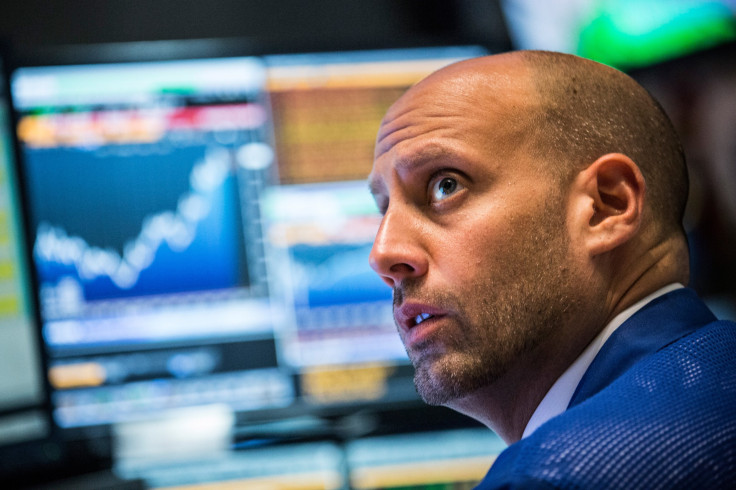Dow Jones Industrial Average Drops As US Stocks Extend Losses In Worst Month Since 2012

This story was updated at 4 p.m. EDT:
U.S. stocks closed lower Monday, with all three major indexes posting losses of more than 6 percent in August, marking their worst month in years. The Dow Jones Industrial Average struggled to stay out of correction territory after global shares in Asia saw another volatile trading session.
After falling as much as 188 points following the opening bell, the Dow closed roughly 115 points lower. The Standard & Poor's 500 index lost around 1 percent, recording its worst monthly decline since 2012.
In the midst of uncertainty surrounding China's economic slowdown, Wall Street is looking ahead to Friday's employment report, which could provide more clues as to the timing of the Federal Reserve's inevitable hike in interest rates.
The Dow Jones Industrial Average (INDEXDJX:.DJI) dropped 114.98 points, or 0.7 percent, to close at 16,528.03. The Standard & Poor's 500 index (INDEXSP:.INX) lost 16.69 points, or 0.84 percent, to end at 1,972.18. And the Nasdaq composite (INDEXNASDAQ:.IXIC) fell 51.82 points, or 1.07 percent, to finish at 4,776.51.
For the month, the Dow has lost 1,164 points, or 6.6 percent, and the S&P 500 has lost 132 points, or 6.3 percent. The Nasdaq has lost 353 points, or nearly 7 percent.
Healthcare company Merck & Co. Inc. (NYSE:MRK) led the Dow lower, losing nearly 3 percent.
Nine of the 10 sectors in the S&P 500 closed lower, led by a nearly 2 percent drop in healthcare stocks while utilities fell about 1.6 percent. Energy was the only gainer, reversing early losses to close more than 1 percent higher. The sector briefly fell more than 2 percent in morning trading after global oil prices fell to less than $49 a barrel.
However, oil prices reversed early losses to close higher after data showed U.S. crude output was lower than previously expected, the U.S. Energy Information Administration said Monday. The gains helped global oil prices erase losses made in August, with crude on course to snap three straight months of declines.
Following the EIA report, West Texas Intermediate (WTI) crude, the benchmark for U.S. oil prices, jumped 8.8 percent to $49.20 per barrel for October delivery on the New York Mercantile Exchange. On the London ICE Futures Exchange, Brent crude, the global benchmark for oil prices, added 7.4 percent to $53.80.
The U.S. dollar traded slightly lower against major world currencies, with the euro above $1.12 and the Japanese yen trading around 121 yen against the greenback.
Meanwhile, Treasury yields edged higher, with the 10-year Treasury yield near 2.21 percent. The rise in yields pushed interest rate sensitive sectors lower, as utilities fell 1.6 percent.
The Shanghai Composite closed Monday’s trading session down 0.8 percent after experiencing a bout of volatility, at one point losing more than 4 percent. The index has lost about 12 percent for the month, and nearly 40 percent since mid-June despite repeated and unprecedented measures by the government to shore up the market.
Germany's Dax and the French CAC 40 lost 0.4 percent and 0.5 percent, respectively. European stocks were on track for their biggest monthly loss in four years.
A robust jobs report for August could offer further evidence the U.S. economy is on a strong enough footing to absorb the impact of a Federal Reserve interest rate hike this year. Although many economists had expected the Fed to change its monetary policy stance in September, some have pushed out their expectation for beyond this year in light of the recent turmoil in global markets.
Economists forecast U.S. employers created 220,000 nonfarm payrolls in July, with unemployment to tick down to 5.2 percent, according to analysts polled by Thomson Reuters.
Earlier this month, the financial markets reacted with mixed emotions to the July numbers because the report didn’t completely solidify whether the Fed would actually hike rates in September or hold off until later.
After Friday's jobs report, there is just one more monthly unemployment reading ahead of the Federal Reserve’s next meeting, set for Sept. 16-17.
© Copyright IBTimes 2024. All rights reserved.












